13 Jan 2007 in SE Ohio
I have been extremely busy with work since returning from vacation in late
December. Those matters have finally calmed down somewhat so I was really
happy to be able to get outside with Jason Folt for a few hours yesterday.
The warm January weather we are presently experiencing is unprecedented in
my six years of residence in Ohio. We've also had lots of rain recently.
Conditions seemed favorable for salamanders but we didn't really know what
to expect. We also decided to check out a new area that neither of us --
nor anybody we know of -- had ever checked out before.
I really enjoy exploring virgin territory but often the habitat and herps
seen don't turn out to be as hoped for. It is the Gambler's Chance that
fuels the fire inside.
The most noteworthy finding of the first part of our hike was the quantity
of greenbriar encountered. I was putting the thorn-proof briar pants I
received for Christmas to good use. We first explored a floodplain area
with vernal pool and lots of logs. It looked reasonable for Ambystoma,
newts, and possibly Hemidactylium, but we didn't see anything.
We continued upstream, checking side hollows as we went.
After over an hour our only "successes" on the herp front were a box turtle
shell and the distant call of a lone peeper.
It remained gray and drizzly throughout the day. We were getting wet but
with temperatures in the upper 50s it was actually kind of nice.
As we continued up the main hollow we encountered a pool which was set
back from the main stream. It had "the look".
I mentioned to Jason that this pool reminds me a lot of a spot where
I found a mud salamander back in November.
I made this comment not because I thought we would find a
mud salamander here, but just to let Jason know what the other spot looked
like. Perhaps I should comment on "the look".
It is a combination of steep banks, leaf litter, possibility of being
weakly spring-fed, substrate, location in the floodplain, and other factors.
I am definitely a novice and my knowledge of
"the look" is still in its formative stages.
I should also mention that the vast majority of spots
with "the look" have not yielded muds.
Whether this is due to my lack of effort or lack
of montanus remains to be determined.
On this day, I only had a 100mm macro lens which was not suitable for
habitat photography. I revisited this spot on 24 April 2007
and took some photos:
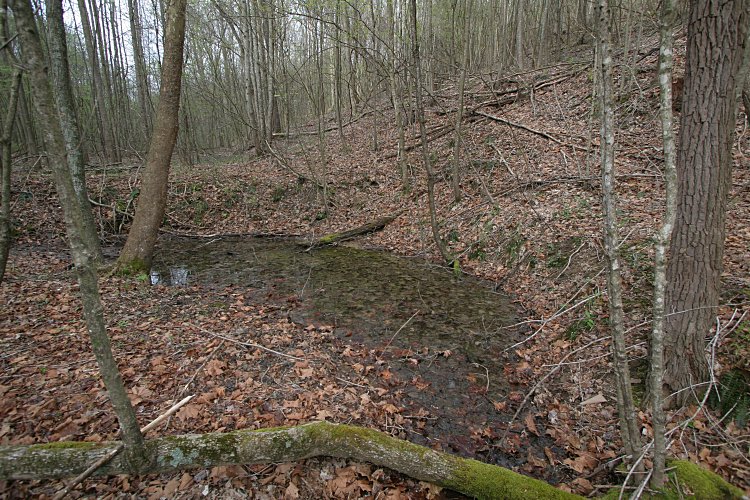
This is almost exactly how it looked in January.
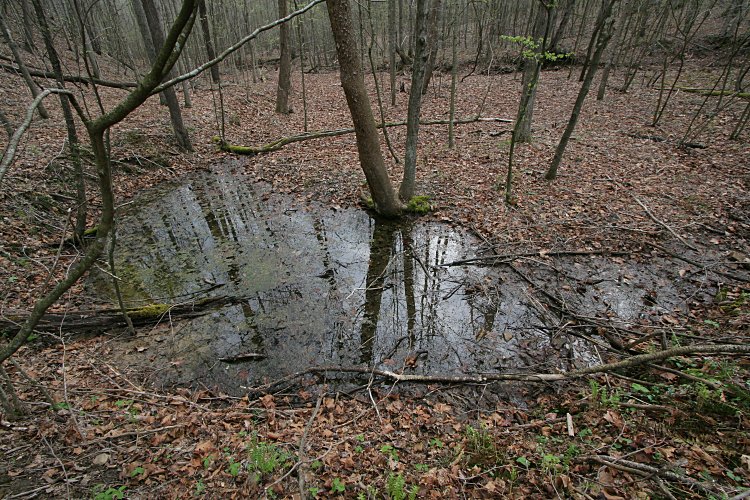
The second photo is taken from from on the hill, looking down.
Note that the main creek is visible in the background, perhaps
30 yards from the pool.
Now back to our story. This spot also looked to have potential for
Ambystoma and Hemidactylium.
Right off the bat Jason stirred up a larva
in the leaf litter, but unfortunately we were unable to capture or
identify it. At least we had seen a live herp. Jason started poking
around the leaf litter at the margins of the pool while I searched for
larvae with dipnet. About a minute later Jason says "I've got a mud."
Unbelievable. No salamanders all day and then a mud turns up?
We would later learn that this is most likely a new County record.
Talk about turning a day around...
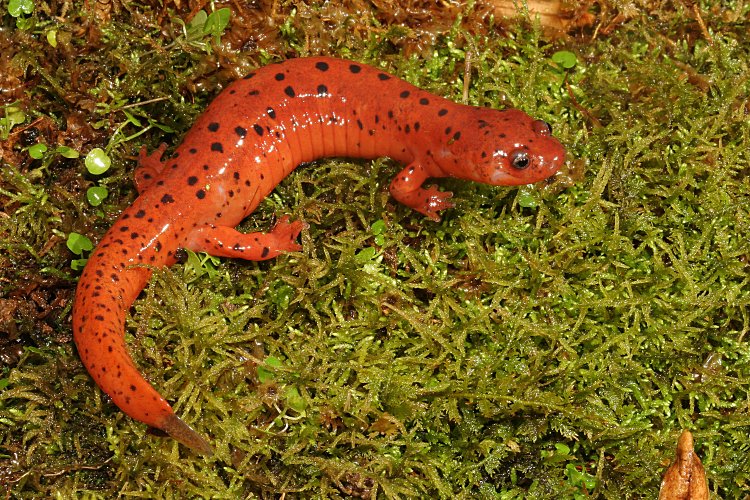
This individual appeared to be an old, grizzled veteran and was quite plump.
Even with its stubby tail it measured 5-1/8" TL.
It was also missing the digits from its left front foot.
Here's another look:
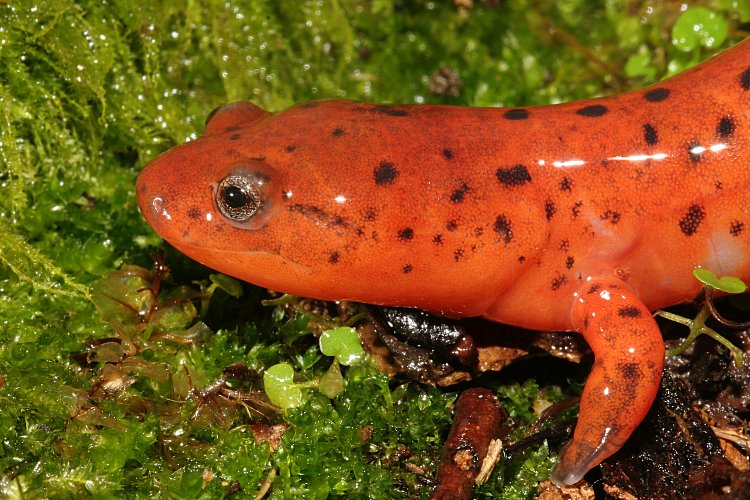
The iris is less dark than on most montanus I've seen.
You can also see the left front foot. One more shot:
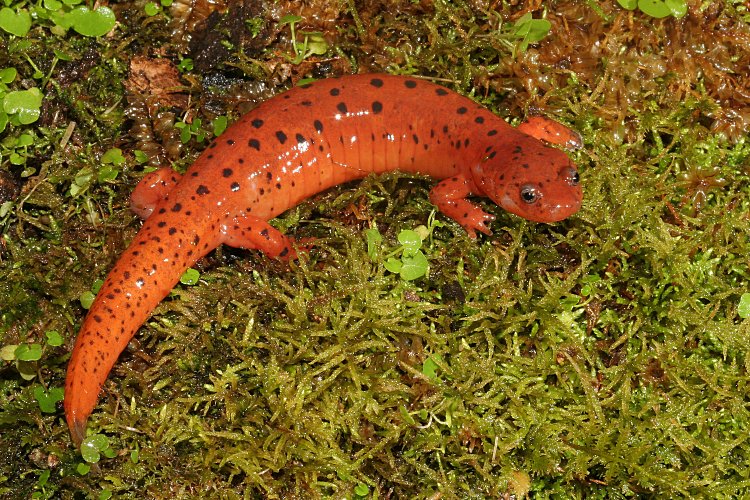
It also had more spots than others I've seen, especially on the tail.
This animal caused me to wonder about the longevity of these critters.
Ten to twenty years would seem plausible -- does anybody out there have
any info on this?
After our excitement settled down, Jason continued to search the margin
of the pool while I worked the dipnet. Jason turned up a twolined salamander
and then another mud! This one was much smaller:
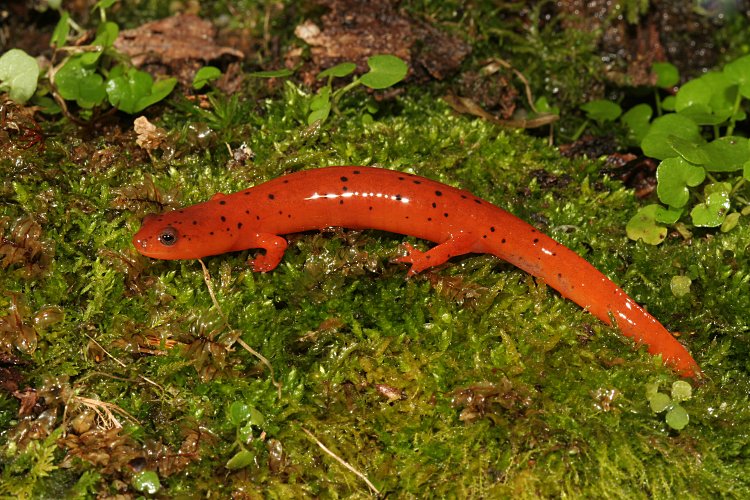
It measured 3-1/8" TL and must have transformed recently.
We have seen larval specimens the same size. Here's another photo:
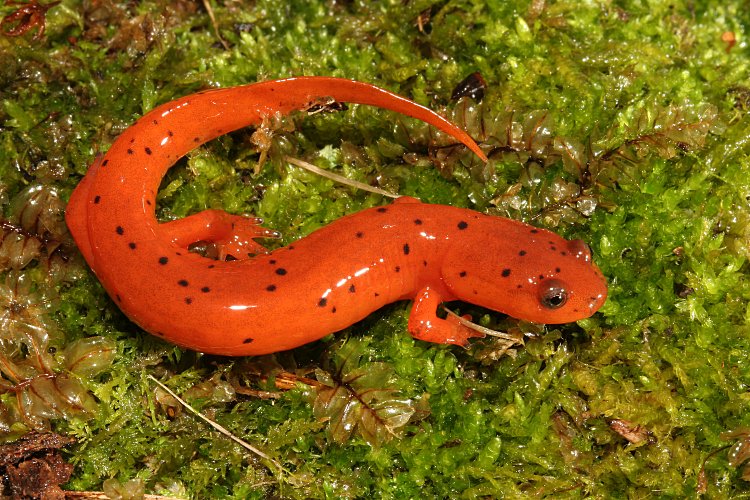
I'm not really happy with what its right rear leg is doing in the photo.
Oh well. We only took a few photos because of the rain.
I continued dipnetting but never got anything. We continued up the hollow
and encountered several more spots which had "the look".
Although we did not find any more mud salamanders we did see several
twolined, dusky, and redbacked salamanders. Life had returned to normal.
I also found a juvenile bullfrog under a rock slab which was rather
unusual considering the habitat: a small rocky stream in closed-canopy forest.
Eventually we called it a day which meant turning around and hiking back
through the greenbriar to our vehicle.
Here's a parting shot from the day:
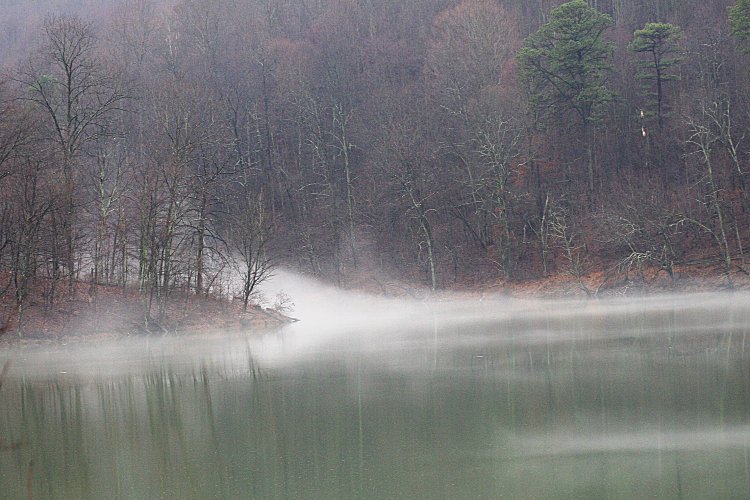
Eerie fog flowing hovering over a lake. The fog is "flowing"
down out of the hollow we had just visited...
I mentioned above that I went back to this spot on 24 April 2007.
I did not find any adult mud salamanders this time.
I did however dipnet several Pseudotriton
larvae. Here are three of them:
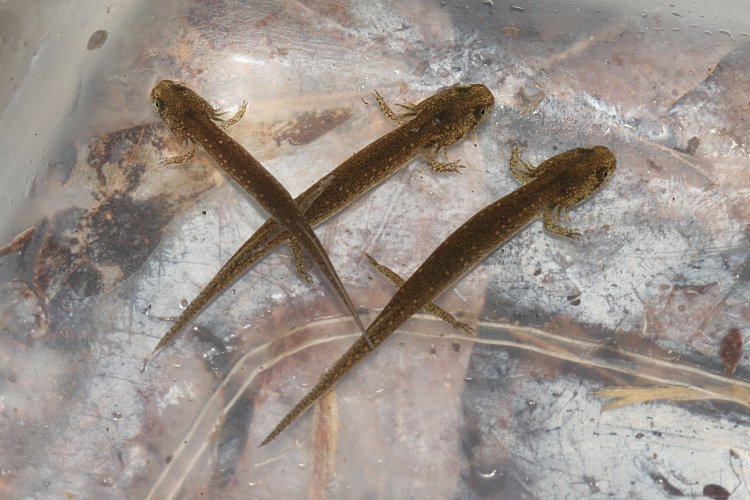
They measured between 23 and 27mm total length and must have hatched
just a couple of months earlier.
Comment added, spring 2011: with the large light spots on the
sides of their bodies, I am now certain that these are
Pseudotriton montanus larvae.
I am fairly certain that the pool these larvae live in has no surface
water between mid June and mid October in most years. Somehow these
larvae must be capable of living underground for a good piece of the year.








